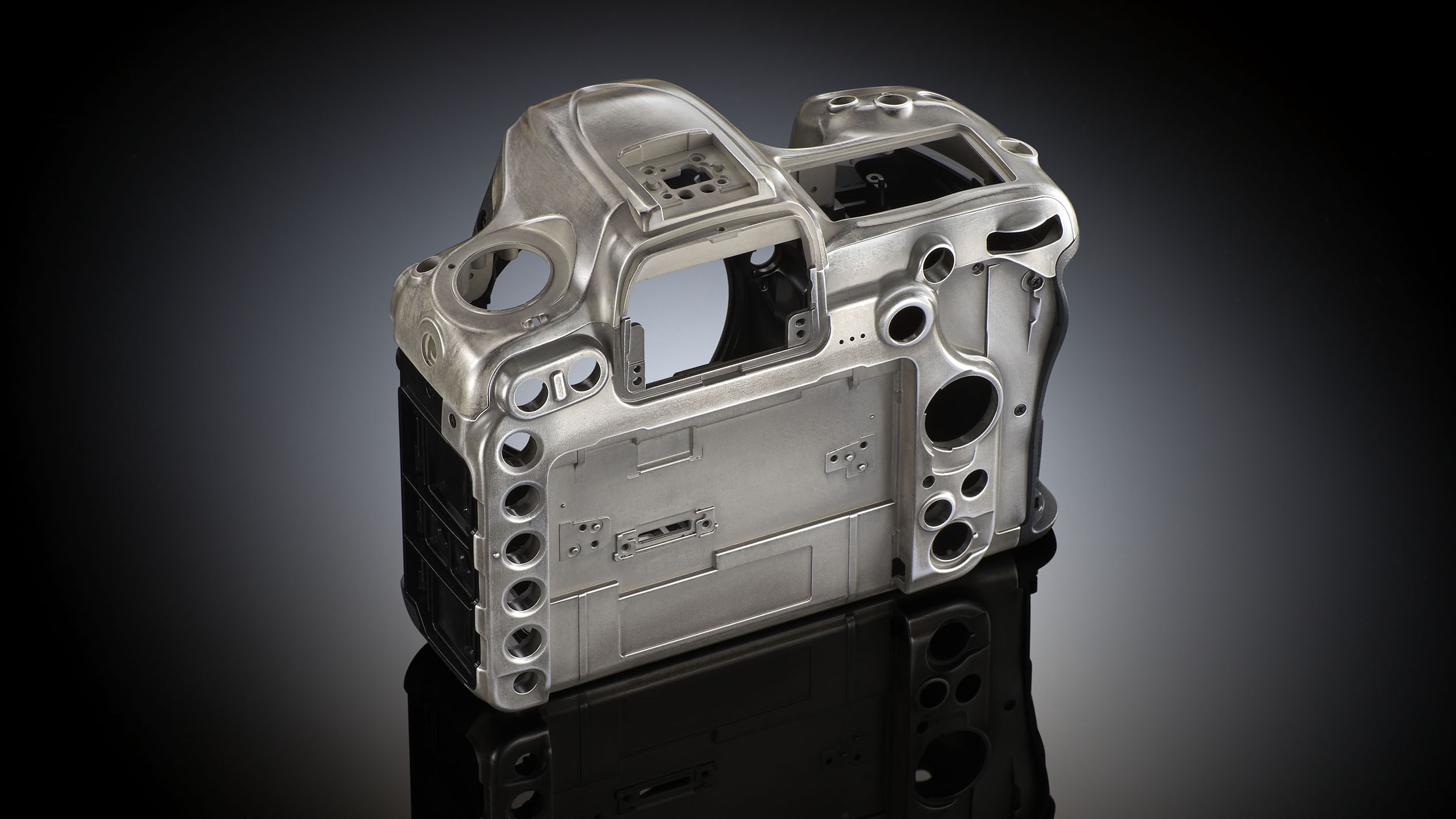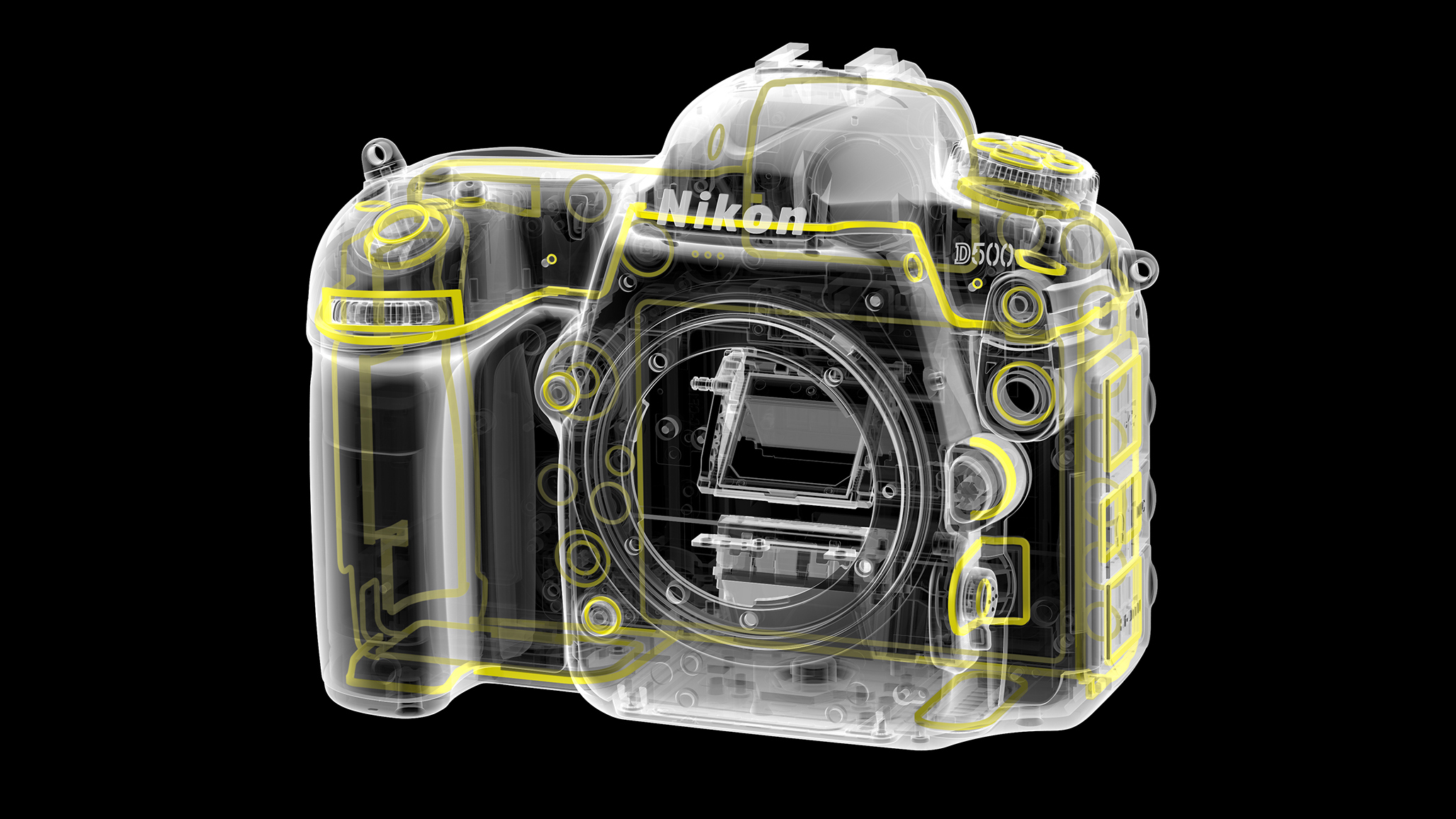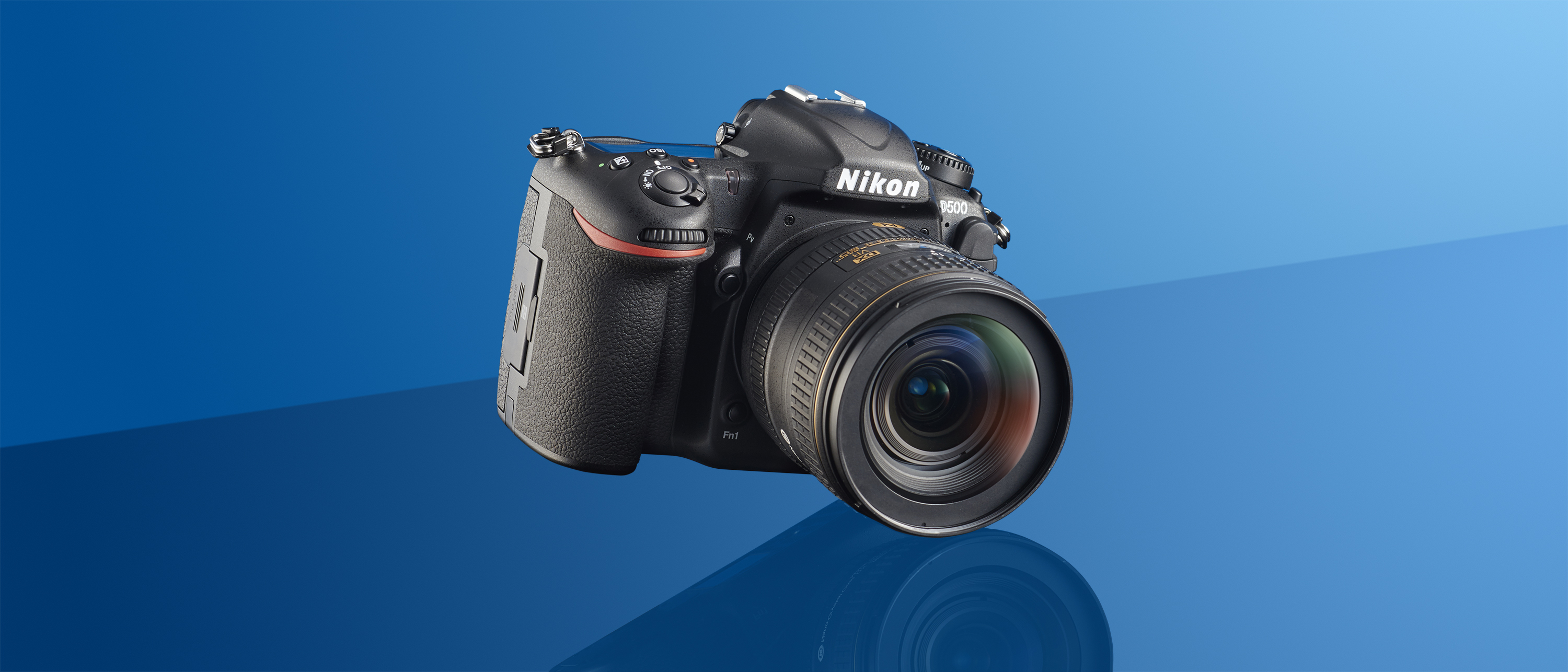Why you can trust TechRadar
Build and handling
- Magnesium alloy body
- Comprehensive weather sealing
- Weighs 860g / 1Ib 14.4oz
While the D500 doesn't have a full metal body like the D5, its metal chassis is more durable than the D300S's. The degree of weather sealing is also greater, so the camera can be used in harsher conditions. Nikon has also omitted a pop-up flash to make the D500 sturdier, and the hotshoe is supplied with a weatherproof seal to protect it when a flashgun isn't mounted.
The camera certainly feels solid and durable, without having the weight of its full-frame sibling. On the front there's a decent grip with a textured coating, while a ridge on the back marks the thumbrest, making for a comfortable holding experience.
All the direct controls you'd expect are present, along with a ridged mini-joystick controller for selecting the AF point quickly when the camera is held to your eye; this sits just to the left of the natural resting position for your thumb on the back of the camera, and is within easy reach. A little lower down is the familiar rocker-style navigation pad with central button, for scrolling through the menu and making settings selections.



It's worth noting at this point that settings can't be selected, nor the menu navigated, using the screen's touch control. However, as mentioned earlier, it is possible to input text (for example for copyright information), set the AF point or scroll through and zoom into images with taps and swipes on the screen. The screen is responsive, and it would be nice to have the option to use it a bit more than Nikon has allowed here.
The screen's high resolution means images are very sharp, with plenty of detail visible. The tilting bracket is one of the most rugged-feeling that I've used, and has clearly been made with durability in mind.
As the D500 is an DSLR it has an optical viewfinder, and, as usual with a high-end camera, Nikon has opted for a pentaprism version for the D500. This provides a 100% field of view when shooting in DX format, or 98% when shooting with the 1.3x magnification option selected. The view is nice and bright, and when shooting at the maximum frame rate the blackout time is very brief, so it's easy to keep up with fast-moving subjects.
Autofocus
- 153-point AF, 99 cross-type AF points
- User-selected array limited to 55 points
- Impressive coverage across the frame
Autofocus is one of the key reasons why the D500 is such an exciting proposition, packing in a brilliant 153-point Multi-CAM 20K autofocus system with 99 cross-type points.
As on the D5, the D500's AF central point is sensitive down to -4EV while all the other points are sensitive down to -3EV, potentially making this a very capable camera in low light.

Sports and action photographers are unlikely to be disappointed by the D500's autofocus performance; it's very fast, and very accurate. It adjusted focus quickly when we shot skateboarders in London's gloomy Undercroft on the Southbank, and kept track with them effortlessly.
The contrast detection AF system that operates when the camera is in live view or video mode seems a little better than the ones in Nikon's other DX format cameras, but as this uses the imaging sensor it could be down to the improved noise control. Even in bright light there are some backwards and forwards adjustments before the subject is sharp, but it doesn't get much worse in low light.
It's not as fast as systems in most compact system cameras, but it's reasonable, and it can be used when the camera is handheld, although moving subjects are best avoided. The visible adjustment means that manual focus is still going to be the preferred option for video shooters who need to adjust focus while recording.
Current page: Build, handling and AF
Prev Page Introduction and key features Next Page Performance and image qualityPhil Hall is an experienced writer and editor having worked on some of the largest photography magazines in the UK, and now edit the photography channel of TechRadar, the UK's biggest tech website and one of the largest in the world. He has also worked on numerous commercial projects, including working with manufacturers like Nikon and Fujifilm on bespoke printed and online camera guides, as well as writing technique blogs and copy for the John Lewis Technology guide.

